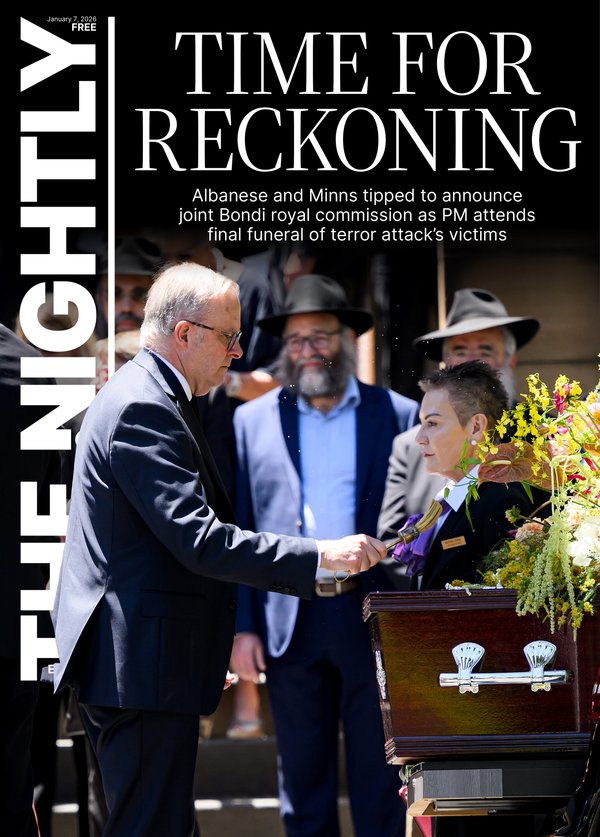SIMON COLLINS: Why I love Jonathan Yeo’s controversial bold red royal portrait of Charles

I’m no fan of the royal family, in fact, I despise everything monarchies stand for.
However, I love the first official portrait of King Charles, a divisive large-scale depiction rendered in a fiery red palette by British artist Jonathan Yeo, a portraitist renowned for painting royalty, actors and celebrities.
If good art should provoke emotion and thought, then this is great art. Yeo’s modern work has prompted emotive responses and divided opinion since being unveiled at Buckingham Palace on May 14.
Sign up to The Nightly's newsletters.
Get the first look at the digital newspaper, curated daily stories and breaking headlines delivered to your inbox.
By continuing you agree to our Terms and Privacy Policy.The King sat for Yeo on four occasions, for around an hour each time, starting in 2021 when was still Prince of Wales.
The bold portrait, which measures 2.6m tall and 2m wide, features the King in the military uniform of the Welsh Guards, of which he was made Regimental Colonel in 1975. The red regalia inspired the artist’s colour scheme.
The clobber fades into crimson brushstrokes — the only things in focus are the King’s head, his sausage-fingered hands and a monarch butterfly, which is moments from landing on his right shoulder.
The butterfly, an addition reportedly suggested by the royal subject, is an apt yet obvious symbol for metamorphosis and rebirth — the prince becomes the King.
The winged insect also represents the British monarch’s renowned environmentalism.
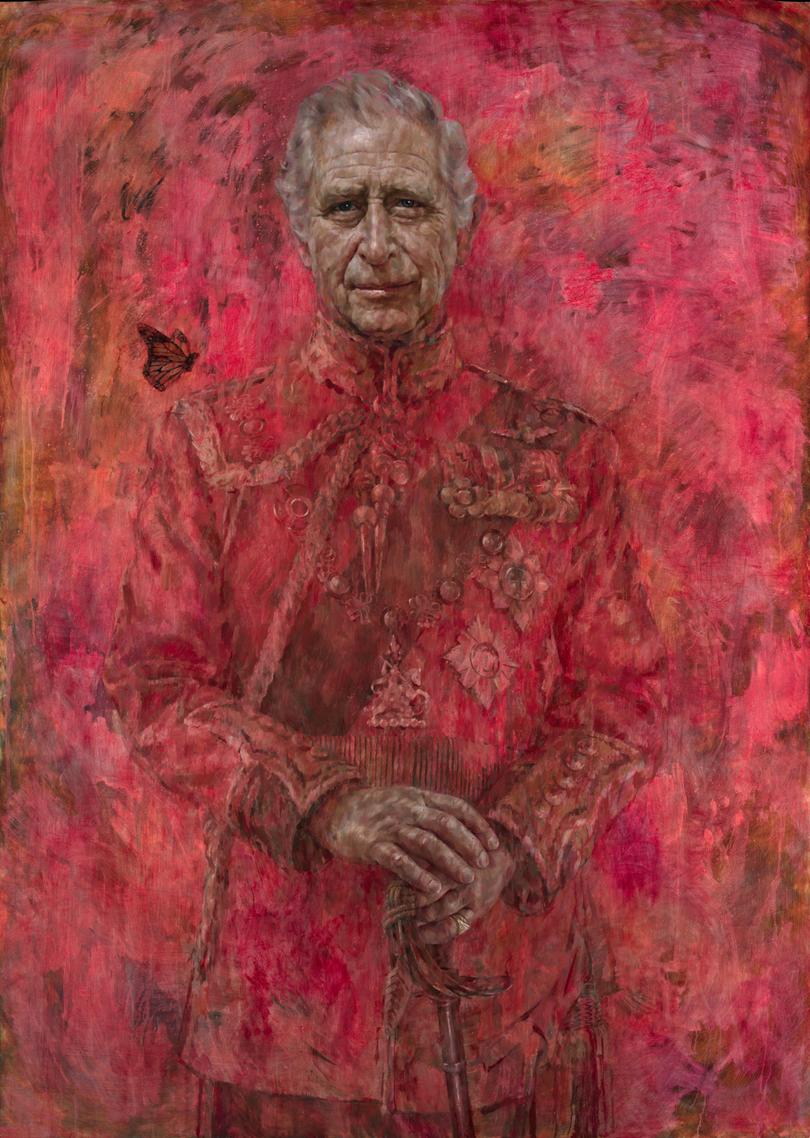
The King looks benign, almost melancholy. His eyes are weary, almost moistened yet there appears to be the inkling of a smile. The overall impression is of a passionate man, devoted to a life of privilege and duty, yet still a man.
The King has given the portrait the royal seal of approval, as has Queen Camilla, who was rendered in far more muted, grey tones by Yeo in 2014.
She joined her husband at the final sitting and reportedly declared: “Yes, you’ve got him”.
Public opinion has been less enthusiastic, with Danielle Cohen in New York Magazine’s The Cut writing “Charles’ face is like a disembodied spectre of death floating between violent brushstrokes”.
Others have described the unconventional painting, which will be displayed at Drapers’ Hall in London, as “disturbing” and “disrespectful”.
Some have facetiously compared the work to the possessed portrait of bloodthirsty 16th-century tyrant Vigo the Carpathian from the movie Ghostbusters II, while others have revisited “Tampongate” — Charles and Camilla’s notorious phone sex affair of 1989.
Yeo appears to welcome the controversy.
“If this was seen as treasonous, I could literally pay for it with my head,” the 53-year-old told the BBC, “which would be an appropriate way for a portrait painter to die — to have their head removed.”
The artist has a history of provocative works that often care little for their subject’s self-regard but connect to deeper truths.
After a formal invitation to paint US President George W. Bush fell through in 2007, Yeo cut up pornographic magazines to make a playfully explicit collage that brought new meaning to the phrase well hung.
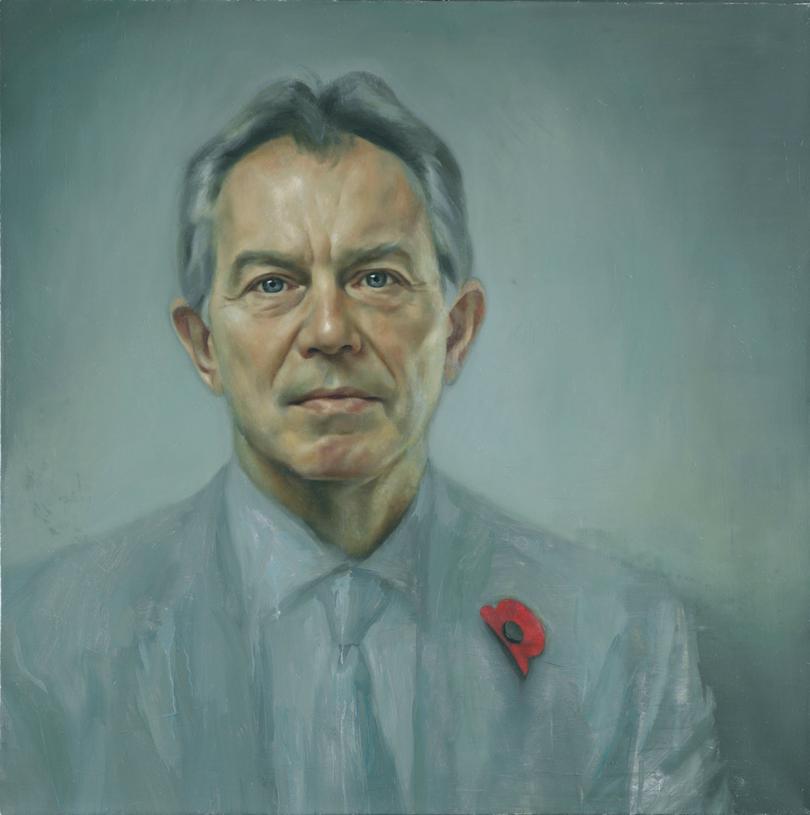
The following year, his official portrait of former UK Prime Minister Tony Blair showed the leader looking haggard and wearing a red poppy — a pointed reference to the Iraq war.
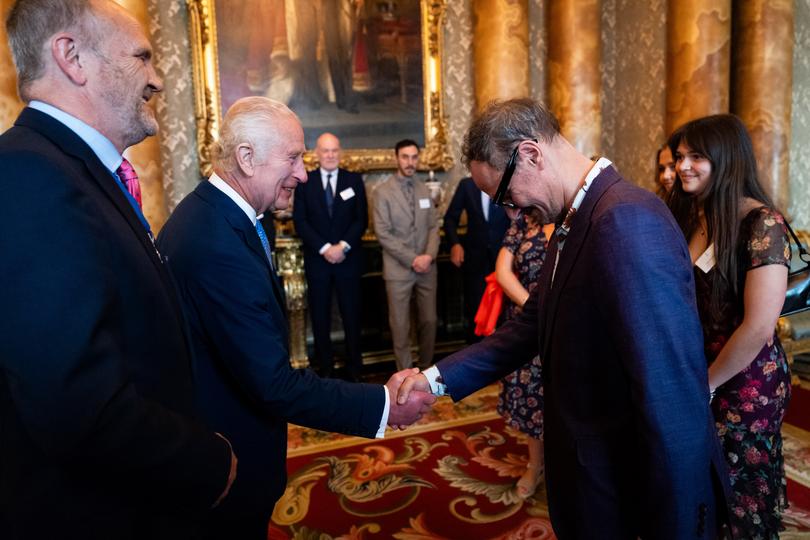
Despite his past form, the royal family are Yeo’s biggest fans.
Queen Elizabeth II commissioned the artist to paint a portrait of beloved naturalist Sir David Attenborough for the Royal Collection, while the late Prince Philip and Queen Camilla have also sat for Yeo.
He has also painted actors Nicole Kidman, Kevin Spacey and Dennis Hopper, model Cara Delevingne, media mogul Rupert Murdoch, Pakistani activist Malala Yousafzai and fellow artist Damien Hirst.
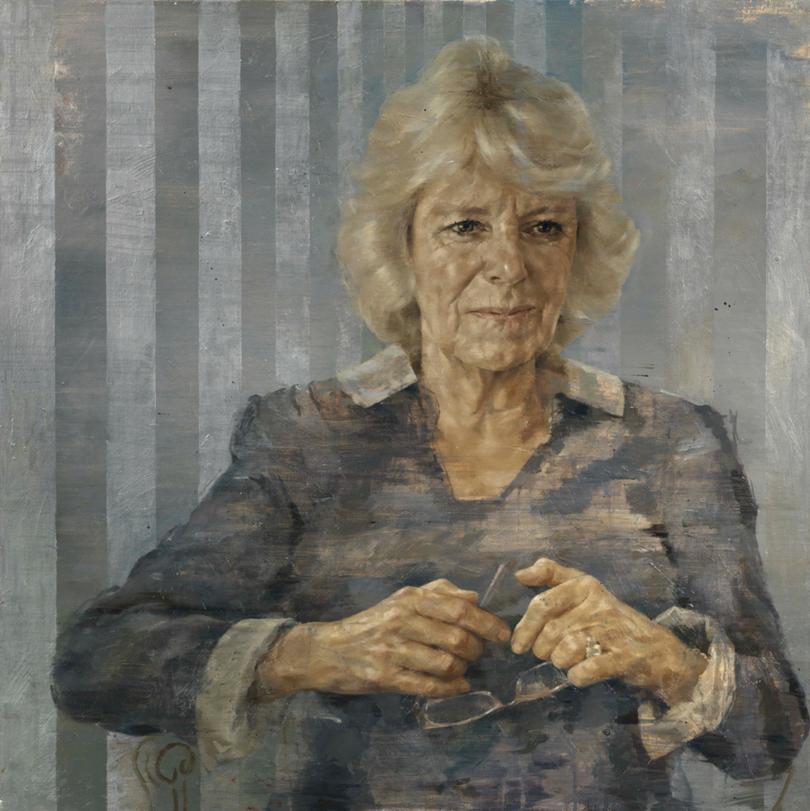
In 2015, Yeo used a similar lurid red palette for his painting of D-Day veteran Geoffrey Pattison, one of 12 portraits to pay tribute to men involved in the Allied invasion of Normandy on June 6, 1944, commissioned by — you guessed it — the then Prince of Wales.
So, in asking this prickly portraitist to turn him into an oil painting, the King knew he might wind up red-faced.
He also ended up with an official portrait that is bloody brilliant.
